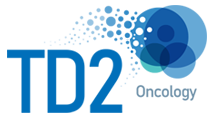Integrating PDX GBM In Vivo Models with Patient History and Whole Exome Sequencing: Advancing Relevance and Precision in Preclinical Studies
Authors: Erin Trachet, Paul Gonzales, Stephen Gately

Abstract: Glioblastoma poses a significant challenge in oncology, necessitating improved translational models that faithfully replicate the intricate tumor microenvironment. Patient-derived xenograft (PDX) models are key in glioblastoma multiforme (GBM) preclinical research. PDX models (subcutaneous and orthotopic) provide a more clinically relevant representation compared to traditional CDX xenografts. Analyzing PDX tumors in their native environment allows for a nuanced understanding of GBM biology, tumor-stroma interactions, and treatment responses. This abstract explores the rationale and advantages of utilizing PDX GBM in vivo models coupled with patient diagnosis and treatment history, empowered by tumor whole exome sequencing (WES), to enhance the relevance of preclinical studies in evaluating GBM-specific treatments. TD2 has access to the over 100 GBM PDX models with fully annotated patient details and treatment history. Moreover, 68 of these PDXs also have WES data, that allows most appropriate model selection to ensure alignment with the therapeutic development strategy. Below is a detailed analysis of two GBM PDX models, GBM6 and GBM46, using patient history and WES data to define criteria for success in assessing novel preclinical therapeutic agents. GBM6, was obtained prior to treatment from a 65-year-old man with glioblastoma multiforme, that contains 642 mutations, including EGFR VIII amplification. GBM46, was obtained from a 55-year-old man with prior treatment, contained 646 mutations, including RAS pathway alterations and EGFR (MET and FLT3) amplification. When grown subcutaneously the anti-tumor activity of cetuximab against GBM6 and GBM46 resulted in 41% and 48% growth inhibition, respectively. Traditional treatments have also been evaluated in the orthotopic setting, with temozolomide (TMZ) showing a nominal improvement in lifespan (11%) as expected for the unmethylated MGMT found in the GBM6 model. By contrast, GBM46 from a patient with prior treatment with TMZ, OSI-774, radiation, and BCNU, exhibited a 58% increase in overall lifespan when treated with TMZ alone. Orthotopic PDX GBM models preserve many molecular characteristics, enabling the study of intrinsic GBM mutations for developing novel therapeutic strategies. While orthotopic models better capture GBM's dynamic nature, traditional xenograft systems remain valuable as rapid screening tools. Models with defined clinical treatment history and WES data allows for testing new agents in models that more closely resemble the clinical development path for a given new agent and aids in deciphering factors influencing therapeutic resistance. These models have the potential to reshape preclinical research paradigms, accelerating the translation of promising therapeutic agents increasing the likelihood of clinical benefit for patients with glioblastoma multiforme.
Download Now
CONTACT US
Get Started.
Have questions about how TD2 can assist with your regulatory needs? Reach out to our expert staff today to get started.


